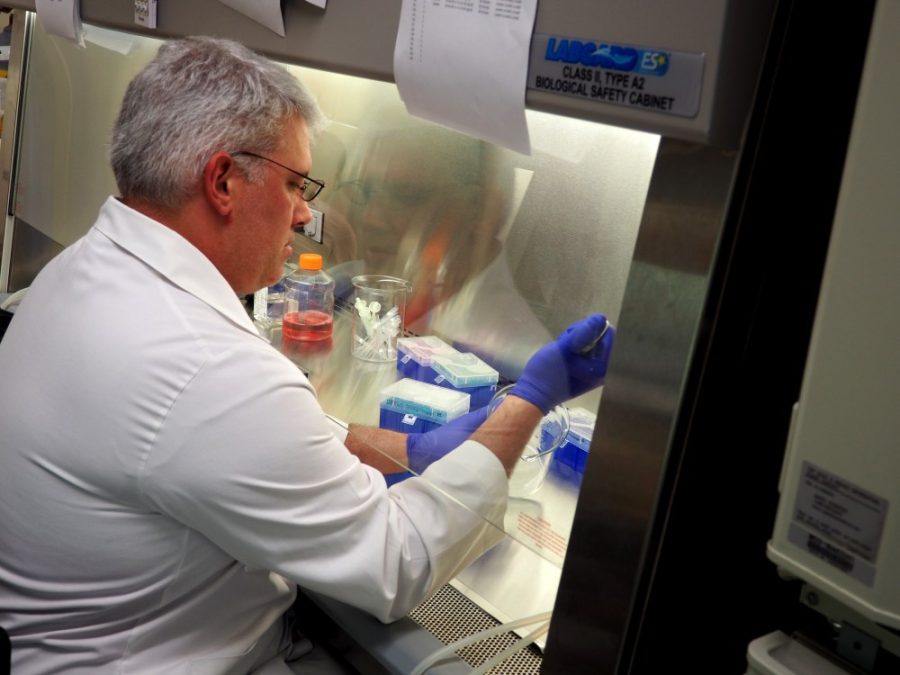The UA Valley Fever Center for Excellence will host an awareness week providing education for the common illness for which Arizonans are at the highest risk.
Valley fever is a disease caused by inhaling airborne spores of the fungus Coccidioides, which resides in native soil. The spores are distributed by the wind from construction, farming and other activities.
Infection begins when a spore is inhaled—it enters the lungs and becomes a larger multicellular structure called a spherule. The spherule grows and bursts, releasing endospores, which develop into more spherules, furthering the infection.
The infection isn’t contagious, and one doesn’t have to be outside for a long period to get the illness—they can be infected with a single breath of air.
Dr. John Galgiani, a specialist in the infectious disease, founded the Valley Fever Center for Excellence in 1996, where they focus on the research, treatment and outreach for valley fever.
It’s absolutely critical to have a center in Arizona because it’s where the infection happens the most, according to Adam Buntzman, a UA assistant research professor of medicine.
RELATED: UA scientists help update national valley fever guidelines
The illness affects about 60 percent of Arizonans, according to Galgiani. About 50 UA students are diagnosed with valley fever by Campus Health Services per year.
There’s usually a spike when people are most likely to get the illness after the monsoon season when the weather cools down during October and November.
Valley Fever occurs in places with high summer temperatures, moderate winter temperatures and low rainfall—places like the southwestern U.S, Northern Mexico and some countries in South America.
Buntzman was infected with valley fever and as a result, stayed in the hospital for 10 days. Afterwards, he began to help the Valley Fever Center for Excellence by researching data on creating the vaccine.
“If you get diagnosed by your doctor with pneumonia, there’s a 30 percent chance that it’s valley fever,” Buntzman said.
Lisa Shubitz, UA research scientist and veterinarian, started at the Valley Fever Center 20 years ago because Galgiani needed someone to help with vaccine studies.
“It causes a lot of illness in people and dogs, who can end up in the hospital or dead,” Shubitz said. “They lose a lot of work time, they feel bad while they have the disease and the vaccine can prevent a lot of this from occurring in people and in animals.”
Dogs can contract the disease just like humans, making them the highest number of animal cases with valley fever in Arizona.
RELATED: UA opens new research center focused on treating pediatric autoimmune disorders
About 6 to 10 percent of dogs living in Pima, Maricopa or Pinal counties have valley fever. About 70 percent of dogs breathe in the fungal spores but control them quickly.
According to the center’s website, owners usually spend a collective $60 million per year treating their pets for the infection.
Other animals like cats, horses, llamas and wild animals have been reported to have the illness, too.
During the illness period, people experience symptoms like fatigue, cough, chest pain, fever, headache and joint aches. Although infection rates are high, about 60 percent of people don’t experience any symptoms.
Identifying valley fever requires a person to have laboratory tests done. Many of the symptoms can be caused by other illnesses, and many people go undiagnosed, confusing the illness with a severe cold or pneumonia.
“It’s not an illness you can continue to work through and just suck it up and go to work,” Buntzman said.
The aim of the research is to end up with a design for a vaccine to protect individuals from valley fever.
Every year, the first or second week of November is named Valley Fever Awareness Week. The Arizona Department of Health Services works with the Valley Fever Center for Excellence to promote awareness education of the disease.
Awareness week starts on Nov. 12 and ends on Nov. 20. A schedule for the week of events can be found here: 2016 Valley Fever Awareness Week Events Schedule.
Follow Angela Martinez on Twitter.















